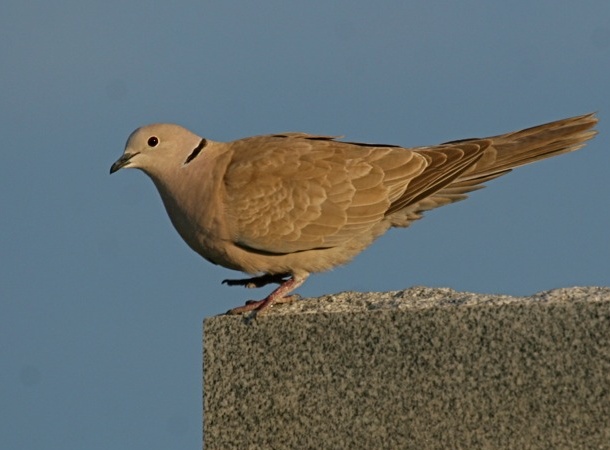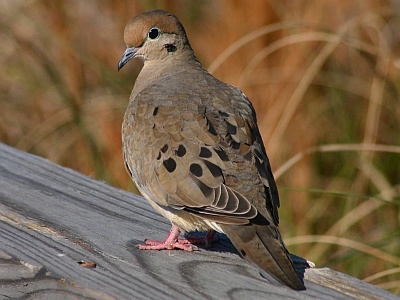
PABIRDS was a-buzz this month about a non-native species that’s rapidly expanding across North America. Though not yet established in Pennsylvania this bird has been seen in New York City. Will it get here soon?
Originally native to India, the Eurasian collared-dove (Streptopelia decaocto) is non-migratory but habitually disperses northwest when its population expands. It began its conquest of North America by human accident when a breeder released his flock of 50 birds in the mid 1970s after some escaped during a burglary in New Providence, Bahamas. As the population expanded in the Bahamas the doves looked northwest and found … Florida! 180 miles of ocean was not a barrier. Eurasian collared-doves were found nesting south of Miami in 1982.
By now the Eurasian collared-dove is resident from Florida to Seattle, from southwestern Canada to northeastern Mexico. The Northeast is the only chunk of the continent they haven’t conquered yet. Considering that they prefer urban and suburban settings with bird feeders and trees, it’s only a matter for time before they completely cover the U.S.
How do you recognize a Eurasian collared-dove? They’re similar to mourning doves, pictured below, but bulkier with a black collar, a squared-off tail and, unlike escaped turtledoves, gray undertail vent feathers. Here’s a photo of a Eurasian collared-dove in flight and here’s a mourning dove. Notice the difference in tail shape. The collared-dove’s three-coo song is different too.

Some worry that Eurasian collared-doves will displace mourning doves but it doesn’t seem to be the case — at least in Florida where Cornell Lab’s Project Feederwatch studied both species in 2011. Careful counts revealed that “Contrary to expectations researchers found that the abundance of native dove species was generally greater at sites with collared-doves than at sites without collared-doves.” Click here to read more.
What does the future hold for us? Eurasian collared-doves are resident to the south and west. They’re working their way up the coast and have made it to the Outer Banks of North Caorlina. This month Vern Gauthier saw a pair in Lancaster County, PA. They’ve been spotted in New York City.
Are they coming soon to Pittsburgh? We should start watching!
(photos by Chuck Tague … who lives in Florida where Eurasian collared-doves are well established)
There was a gap in the ecosystem with the eradication of the Passenger Pigeon. Nature fills gaps with something, even with human help. glad to see they have not yet caused any problems with natives… This year, in September, marks the 100th year that “Martha” died, the last living known passenger pigeon, and if I remember correctly, one of the only documented, to the minute, extinctions known…
Some have been seen in Ohio:
Here is a recent post by someone in Celina, Ohio:
http://birding.aba.org/maillistdigest/OH#739397
Do you have a link to the Cornell research paper you quoted in this post? I tried Googling, but I couldn’t find it.
Karla, I added the link inside the blog.
Kate,
We’ve had regular sightings every year in Lebanon County as well. Most of the sightings are only 5 miles from my home in Hershey!
Art
Kate,
I noticed in your two photos that the Eurasian-collared Dove does not have the blue eye-ring that the Mourning Dove has. Would that be another diagnostic key?
Art
Art, that might be a clue but I have not been around Eurasian collared-doves enough to know. I think the blue eye-ring in mourning doves may be a breeding season feature. Might not be present all year… I’m not sure.